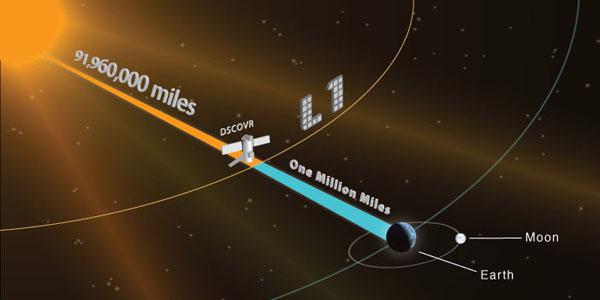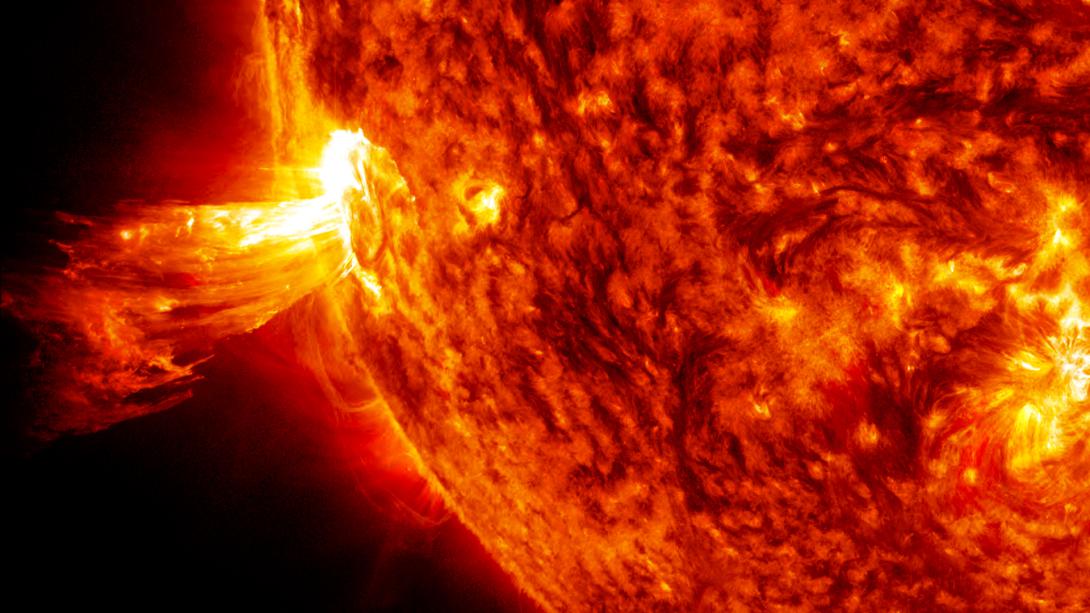DSCOVR Weather Satellite Reaches L1 Orbit
The DSCOVR satellite today reached its orbit position 1 million miles from Earth, little more than 100 days after its winter launch. The National Oceanic and Atmospheric Administration satellite will become the first operational spacecraft in deep space to provide constant weather analysis.
The Deep Space Climate Observatory (DSCOVR) satellite today reached its orbit position 1 million miles from Earth, little more than 100 days after its winter launch. The National Oceanic and Atmospheric Administration (NOAA) satellite will become the first operational spacecraft in deep space to provide constant weather analysis.
DSCOVR will replace NASA’s aged Advanced Composition Explorer (ACE), launched in 1997 and operating a decade past its design life, and is expected to begin operations later this summer.
Scientists at NOAA’s Space Weather Prediction Center in Boulder, Colorado, will use data from DSCOVR for real-time solar wind observations and to make improved space weather predictions and issue faster and more reliable regional alerts, watches and warnings that will give users of the data about an hour’s warning before damaging solar winds reach the Earth.
“DSCOVR will trigger early warnings whenever it detects a surge of energy that could cause a geomagnetic storm that could bring possible damaging impacts for Earth,” Stephen Volz, assistant administrator for NOAA’s satellite and information service, says in a statement. DSCOVR will orbit between the Earth and sun at the L1 Lagrange point—agency parlance for the stable point where gravitational forces are in equilibrium.
NOAA’s space weather forecasters will use data from DSCOVR, along with a new forecast model scheduled to be operational in 2016, to predict on a regular basis geomagnetic storm magnitudes. Geomagnetic storms occur when plasma and magnetic fields streaming from the sun impact Earth’s magnetic field, causing large magnetic eruptions that disrupt power grids, aviation, telecommunications and GPS systems. Annual losses due to power outages throughout the United States caused by solar storms are estimated at more than $100 billion.
Though past its service life, ACE will continue to provide research data to the science community, even though it is a research satellite and not designed to function during all possible types of solar events. DSCOVR was built differently and designed to withstand severe and extreme storms.
DSCOVR is carrying two NASA Earth-observing instruments that will gather a range of measurements—from ozone and aerosol amounts to changes in Earth’s radiation budget, or the balance between incoming radiation and that reflected from the Earth, according to NOAA. The Earth science data will be processed at NASA’s DSCOVR Science Operations Center and archived and distributed by NASA’s Atmospheric Science Data Center.
“DSCOVR has reached its final orbit and will soon be ready to begin its mission of space weather monitoring for NOAA and Earth observing for NASA,” Al Vernacchio, DSCOVR project manager at NASA’s Goddard Space Flight Center in Greenbelt, Maryland, says in a statement.
The DSCOVR mission is a partnership between NOAA, NASA and the U.S. Air Force; the latter provided the Space X Falcon 9 launch vehicle. NOAA will operate DSCOVR from its NOAA Satellite Operations Facility in Suitland, Maryland.






Comment
The first US weather
The first US weather satellite in deep space, the DSCOVR is (http://www.aerospace-technology.com/news/newsnoaas-dscovr-satellite-rea…) currently located at Lagrange point 1 (L1), and will soon undergo final instrument checks.The satellite is designed to provide measurements of solar wind conditions to help monitor potentially harmful solar activity. It will replace Nasa's advanced composition explorer (ACE) research satellite, which will continue to serve the science community.
Comments